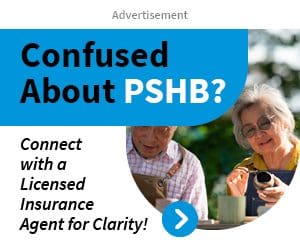Key Takeaways
-
The 2025 changes to USPS health insurance through the new Postal Service Health Benefits (PSHB) program could significantly impact your coverage and costs.
-
Understanding Medicare integration and Open Season requirements is essential to ensure seamless and effective healthcare coverage.
What the PSHB Changes Mean for You
Starting in 2025, the Postal Service Health Benefits (PSHB) program will replace the Federal Employees Health Benefits (FEHB) program for USPS employees, retirees, and their eligible family members. This shift introduces a health insurance system tailored specifically for the postal workforce, aiming to address unique needs while managing healthcare costs more efficiently.
The changes affect a wide range of participants, from current employees to retirees, and bring both opportunities and challenges. To help you navigate this transition, let’s break down what you need to know and how to prepare.
Key Differences Between FEHB and PSHB
The transition from FEHB to PSHB is more than just a name change. The new program includes critical differences that could impact your coverage, including:
-
Exclusivity: PSHB is exclusive to USPS employees, retirees, and their families. Unlike FEHB, this tailored approach means that non-postal federal employees are not part of the same system.
-
Medicare Integration: For Medicare-eligible retirees, PSHB plans require enrollment in Medicare Part B. This integration aims to reduce costs while providing more comprehensive coverage.
-
New Plan Options: PSHB offers plans specifically designed with postal workers in mind, which may result in better alignment with your needs compared to the broader FEHB options.
Open Season: A Critical Time for Your Coverage
Open Season, which runs from November 11 to December 9, 2024, will be your opportunity to evaluate PSHB plans and make changes to your health coverage. Even if you’re automatically enrolled in a plan corresponding to your current FEHB coverage, reviewing your options is crucial.
Why Open Season Matters:
-
Plan Comparison: Open Season allows you to compare different PSHB plans and choose the one that best fits your needs.
-
Life Changes: If your circumstances have changed—such as marriage, divorce, or adding dependents—this is the time to update your coverage.
-
Cost Review: Evaluate how your new plan’s premiums, deductibles, and out-of-pocket maximums compare to your current FEHB coverage.
Action Tip:
Mark your calendar for Open Season and spend time reviewing plan details to avoid surprises in January 2025.
Medicare and Your PSHB Coverage
One of the most significant updates in the PSHB program is its integration with Medicare. If you’re a retiree eligible for Medicare, you’ll likely need to enroll in Medicare Part B to maintain your PSHB coverage. However, there are exceptions to this rule.
Who Needs Medicare Part B?
-
Required Enrollment: If you retire after January 1, 2025, you must enroll in Medicare Part B to maintain PSHB coverage.
-
Exemptions: Retirees who left the workforce on or before January 1, 2025, and who are not enrolled in Medicare Part B, are exempt. However, voluntary enrollment could still enhance their benefits.
Why Medicare Integration Matters:
-
Lower Out-of-Pocket Costs: Combining PSHB with Medicare Part B can reduce out-of-pocket expenses for healthcare services.
-
Seamless Coverage: The integration creates a coordinated approach to managing your healthcare needs.
Enrollment Reminder:
If you’re turning 65, your Initial Enrollment Period for Medicare begins three months before your birthday and ends three months after. Missing this window could result in late enrollment penalties.
Costs to Consider in 2025
Healthcare costs are always a concern, and the PSHB program is no exception. Here’s what you can expect in terms of expenses:
-
Premiums: PSHB premiums will vary based on the plan you choose. The government continues to cover a significant portion of these costs, similar to FEHB.
-
Medicare Part B Premiums: For those required to enroll in Medicare Part B, the standard premium will be an additional cost to factor into your budget.
-
Deductibles and Copayments: These will differ depending on the specific plan, so reviewing these details during Open Season is critical.
Budgeting Tip:
Prepare for combined costs if you’re enrolling in both Medicare Part B and a PSHB plan. Look at your overall healthcare expenses, including premiums, deductibles, and any out-of-pocket caps.
What This Means for Active USPS Employees
If you’re still working for USPS, the transition to PSHB may feel more straightforward, but it’s still important to understand the new system:
-
Uninterrupted Coverage: Your current health benefits will automatically transfer to a corresponding PSHB plan.
-
Future Planning: If you plan to retire after January 1, 2025, understanding Medicare Part B requirements now will save you from surprises later.
-
Family Coverage: Ensure your dependents’ information is accurate to avoid any hiccups during the transition.
How Retirees Should Prepare
Retirees are among the most impacted by the transition to PSHB. Whether you’re already retired or planning to retire soon, here are some key steps:
-
Confirm Your Medicare Status: If you’re Medicare-eligible, determine whether you need to enroll in Part B.
-
Review Plan Details: Look at PSHB plan options to find the best fit for your healthcare needs and budget.
-
Understand Deadlines: Pay close attention to enrollment periods to avoid lapses or penalties.
Proactive Steps:
Start gathering your Medicare and USPS documentation now to streamline the transition. Having everything in order will make Open Season decisions easier.
Coverage for Families
The PSHB program continues to offer coverage for eligible family members, including:
-
Spouses
-
Children under 26
-
Disabled Dependents: Adult children with qualifying disabilities may also remain covered.
Family Focus:
During Open Season, double-check that all eligible family members are listed on your plan. Updating this information ensures uninterrupted coverage for your loved ones.
Preparing for the 2025 Transition
Switching to the PSHB program might seem overwhelming, but with a little preparation, you can make the process smooth:
-
Stay Informed: Regularly check USPS updates and communications for the latest information on PSHB.
-
Set Reminders: Don’t let key dates like Open Season or Medicare enrollment deadlines slip by.
-
Compare Plans: Use online tools and resources to evaluate your options and make an informed choice.
Quick Checklist:
-
Are your Medicare documents ready?
-
Have you reviewed your family’s eligibility?
-
Did you set aside time to explore Open Season options?
Looking Ahead to a New Era in Postal Benefits
The launch of the PSHB program represents a major evolution in USPS health benefits. For many, it’s an opportunity to access more tailored coverage options and benefit from Medicare integration. For others, it’s a chance to reassess their healthcare priorities and ensure they’re prepared for future needs.
By taking the time to understand these changes and acting during Open Season, you’ll be well-positioned to navigate this new system effectively. Staying proactive and informed will help you avoid unnecessary stress and make the most of your benefits.










